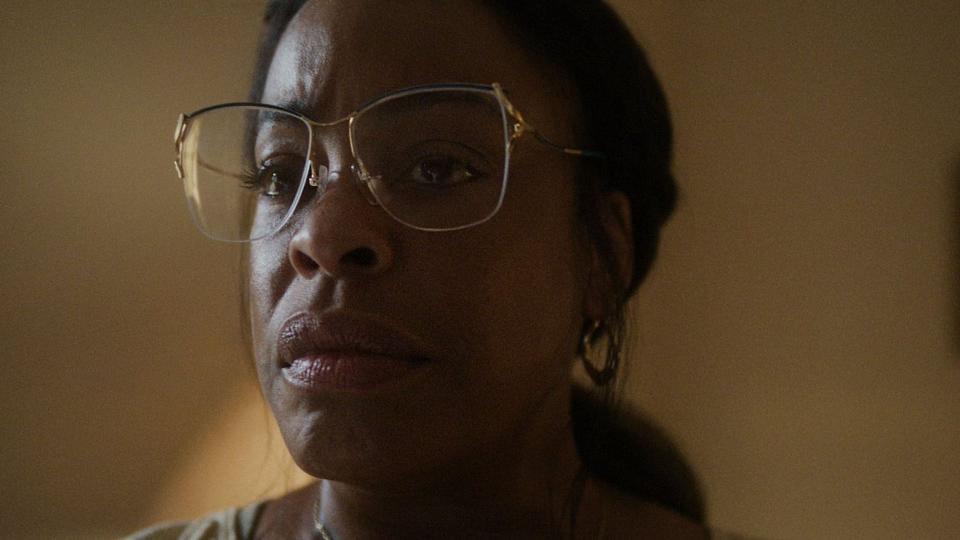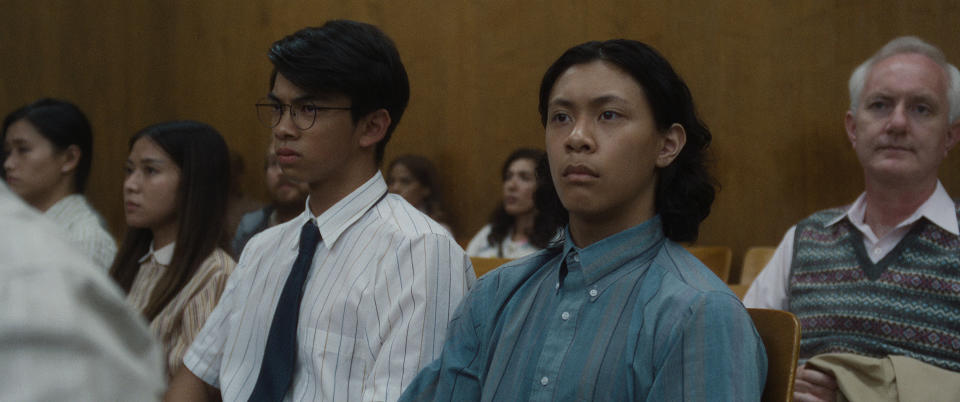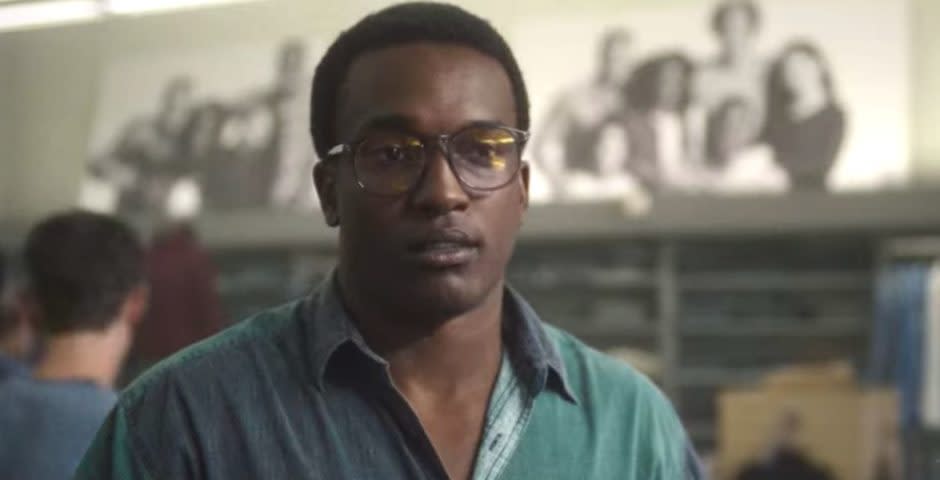Yes, Netflix’s ‘Dahmer’ Is Exploitative — It Also Sticks Largely to the Facts

Netflix’s “Dahmer,” created by Ryan Murphy and Ian Brennan, wants to offer a more progressive view of Milwaukee serial killer Jeffrey Dahmer, who killed 17 men and boys over the course of a decade and a half.
“Dahmer – Monster: The Jeffrey Dahmer Story,” which is indeed the title, aims for that progressive viewpoint in two ways but also, sneakily, a third one.
More from IndieWire
The series considers how the internal failures of law enforcement ultimately enabled Dahmer’s killing spree; a bulk of the 10 hour-long episodes are also devoted to giving voice and face to the victims often overlooked by similar fictionalized serial killer shows and movies; yet it also, in showing Dahmer’s occasional flashes of guilt or self-doubt or feelings of futility about the murders and himself, succeeds whether on purpose or not in humanizing him to a degree.
That’s already proven to be a huge problem for relatives of the victims — including Eric Perry, cousin of Errol Lindsey, whom Dahmer lured back to his apartment to drug and strangle — who understandably feel the show chooses pandering to true crime buffs over respectfully honoring the victims.
The show’s production team denied any efforts to exploit the surviving families’ pain or re-traumatize them again. “Dahmer – Monster” isn’t as grisly as you’d expect, though it’s certainly brutal at times. But any series such as this is inherently exploitative in how it mines and re-mines suffering and pain, feeding off the cultural thirst for true crime horror without, as Perry claimed, discussing the production with the victims’ families.
There’s also the fact that Dahmer is played by Evan Peters, as handsome and beloved an actor as any from the Ryan Murphy stable. (He’s previously starred in series like the “American Horror Story” franchise and “Pose.”) Dahmer has long been romanticized by viewers dating back to his incarceration in which (as depicted in the series) “fans” sent him love letters and gifts and even published a comic book immortalizing his, um, achievements. The casting of Evan Peters, here with bleach-blond hair and aviator eyeglasses, isn’t helping quell the argument that “Dahmer,” at least in part, is itself romanticizing the serial killer.
This all coalesces into what is largely an exploitative and traumatizing affair on Netflix, though mostly a compelling one despite committing the cardinal but often-repeated streamer sin of too many hour-long episodes. “Dahmer” could’ve gotten away with six, though there is one standout hour that couldn’t be cut at all (Episode 6, “Silenced”) which follows Dahmer’s 1991 victim Tony Hughes, a deaf aspiring model and actor played by Rodney Burford.
Let’s examine the key facts and fictions presented in “Dahmer.”
1. Who Is Glenda Cleveland?

Netflix
The most powerful aspect of the show is Niecy Nash’s wonderful and empathetic performance as Glenda Cleveland, seen here as Dahmer’s next-door neighbor at the Oxford Apartments on 25th Street. Throughout the series, she’s seen repeatedly attempting to try and warn local law enforcement about the activities inside apartment 213, where Dahmer is sexually assaulting then strangling and dismembering his victims. The show’s most horrifying moments occur not on camera but as heard through the vents connecting the adjoining apartments, when Nash’s Glenda can’t sleep at night because of the sounds of screaming and drill-sawing resonating through the ducts.
While Glenda Cleveland did actually exist, the real person lived in a building adjacent to Dahmer’s and not in the literal apartment next door as seen here. Murphy and Brennan’s Cleveland is a composite character combining the real-life Glenda Cleveland with Dahmer’s actual next-door neighbor named Pamela Bass. For further reading, the (actually not-half-bad) documentary “The Jeffrey Dahmer Files” from 2012 features exclusive new interviews with Bass, who did catch on to what Dahmer was up to, hearing screams and the sounds of sawing and bones breaking in the night while bearing the brunt of the awful stench of putrefying flesh.
That smell filled the entire apartment building, leading to it being razed and its tenants displaced shortly after Dahmer finally went to prison. Cleveland, who lived in the building next door, did observe the 1991 (Dahmer’s final and most horribly prolific year of killings) incident involving the 14-year-old Konerak Sinthasomphone (more on him in a minute) in which Sinthasomphone tried to escape Dahmer’s apartment, dazed and drugged, and was sent back by police.
2. What Happened to Konerak Sinthasomphone?
Can’t stop thinking about this disturbing scene from DAHMER where one of Jeffrey Dahmer’s victims finally manages to escape… and the police actually bring him back inside the apartment.
Now on Netflix. pic.twitter.com/vcsFWOco0p
— Netflix (@netflix) September 21, 2022
The most horrifying and infamous of Dahmer’s killings is probably the story of Laotian boy Konerak Sinthasomphone (Kieran Tamondong), a 14-year-old on whom Dahmer experimented with his method of drilling a hole into victims’ skulls and then filling it with hydrochloric acid in an attempt to make a kind of lifeless sex zombie. Dahmer’s method wasn’t initially successful, as when he stepped out to pick up more beer (Dahmer was a restless alcoholic, as the show accurately hammers home again and again), he found Sinthasomphone confused and stumbling in the street.
Dahmer was able to convince the two police offers who found him, John Balcerzak and Joseph Gabrish, that Sinthasomphone was his live-in boyfriend and that his state was simply the result of a lovers’ quarrel. Meanwhile, neighbors including Glenda Cleveland stood by in disbelief as the white cops chose to believe a creepy white man over a group of Black community members in a poor, underserved neighborhood who stood by deeply concerned while law enforcement repeatedly did nothing.
So Sinthasomphone was escorted back to Dahmer’s apartment, where his skull was again injected with acid, proving fatal, before his body was dismembered and head stored in Dahmer’s freezer.
That’s all unfortunately true. What isn’t true, however, is that as shown in the final episode, officers Balcerzak and Gabrish ever received an “officer of the year” award. Thanks to Glenda Cleveland’s efforts, along with the Reverend Jesse Jackson, they were suspended after the Sinthasomphone incident but reinstated to their jobs in 1994.
3. And What About His Brother?

COURTESY OF NETFLIX
What’s more is that, in a truly horrifying coincidence, Dahmer had already previously reigned terror over the Sinthasomphone family. In 1988, Dahmer was sentenced to a year’s probation for molesting Sinthasomphone’s older brother before he went on to murder Konerak. (Dahmer was insistent in later testimonies that it was a mere coincidence and that they met at Grand Avenue Mall, whereas in the show, Dahmer is seen buying the teen beer and doesn’t make the connection between the brothers.)
Judge William Gardner went on to receive much criticism following Dahmer’s final arrest for the leniency of the molestation sentence. In the show, he’s painted negatively in a moment where he appears not to understand Sounthone Sinthasomphone’s broken English, but Anne E. Schwartz’s book “Monster: The True Story of the Jeffrey Dahmer Murders” indicates that the Sinthasomophone family wasn’t present for the 1988 sentencing.
4. What Happened with Tony Hughes?

Netflix
In the Paris Barclay-directed Episode 6, “Silenced,” Dahmer is shown more or less courting the 31-year-old deaf man Tony Hughes throughout 1991 in Milwaukee, first meeting him at a gay bar and then continuing to see him. The episode also shows Dahmer at his most arguably human, seeming to have real feelings and even a tenderness for Hughes. But then, of course, when Hughes has to leave for work after their first night together, Dahmer bludgeons him off-camera with a hammer and, it’s implied, sexually experiments with his corpse.
In reality, Dahmer knew Tony Hughes as early as 1989 according to a friend of Hughes’. In his confession, Dahmer said he had never met Hughes before the night he was murdered. Hughes’ friend, however, said Dahmer had come looking for Hughes several times over the years leading up to his murder. Hughes’ disappearance was reported in the paper before it came out in the confessions that Dahmer had killed him.
5. What About the Family Testimonies in the Final Courtroom Scene?
What the show handles mostly deftly in Episode 8, named “Lionel” after Dahmer’s father and directed by Gregg Araki, is Dahmer’s trial after he gains international infamy as a murderer, necrophile, and cannibal. It’s also the moment now most controversial from the show, as it painstakingly, word-for-word recreates actual testimony from the trial — especially at a key moment where loved ones of the victims were allowed to speak on the stand and address Dahmer directly.
That includes a scene with the rage-filled Rita Isbell (here played by DaShawn “Dash” Barnes), the sister of one of Dahmer’s final victims, Errol Lindsey. After screaming at Dahmer, “I hate you, motherfucker,” she’s shown attempting to lunge at him before she’s escorted out of the courtroom by security.
That really did happen, and it’s a reenactment that’s proved most upsetting for Lindsey’s cousin, who over the weekend on Twitter questioned why we need yet another Dahmer retelling at all.
“I’m not telling anyone what to watch, I know true crime media is huge rn, but if you’re actually curious about the victims, my family (the Isbell’s) are pissed about this show,” he wrote. “Recreating my cousin having an emotional breakdown in court in the face of the man who tortured and murdered her brother is WILD.”
The murders are a matter of public record and so ostensibly the production was not required to ask permission for or to even inform the families about the series.
“So when they say they’re doing this ‘with respect to the victims’ or ‘honoring the dignity of the families,’ no one contacts them,” he wrote. “My cousins wake up every few months at this point with a bunch of calls and messages and they know there’s another Dahmer show. It’s cruel.”
“Dahmer” is now streaming on Netflix.
Best of IndieWire
From 'Reality Bites' to 'Fatal Attraction,' Keep Track of All the Upcoming Film-to-TV Adaptations
7 New Netflix Shows in September 2022 — and the Best Reasons to Watch
Sign up for Indiewire's Newsletter. For the latest news, follow us on Facebook, Twitter, and Instagram.


